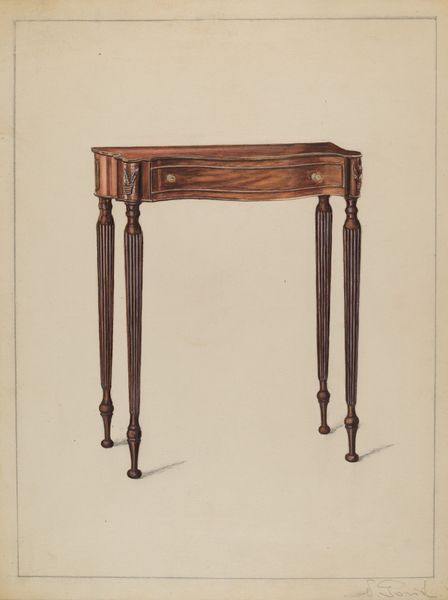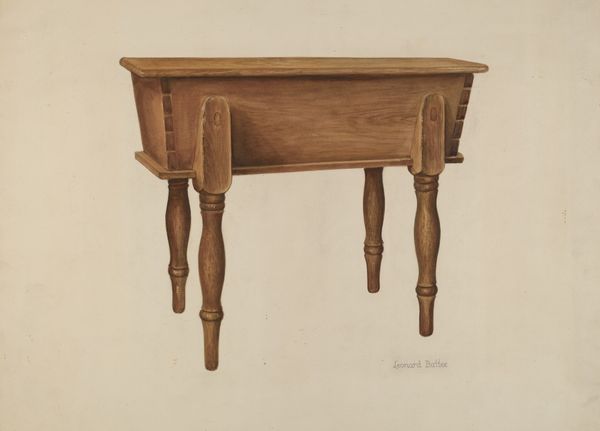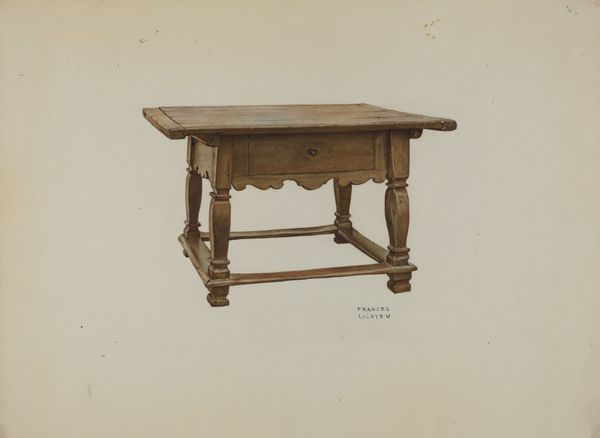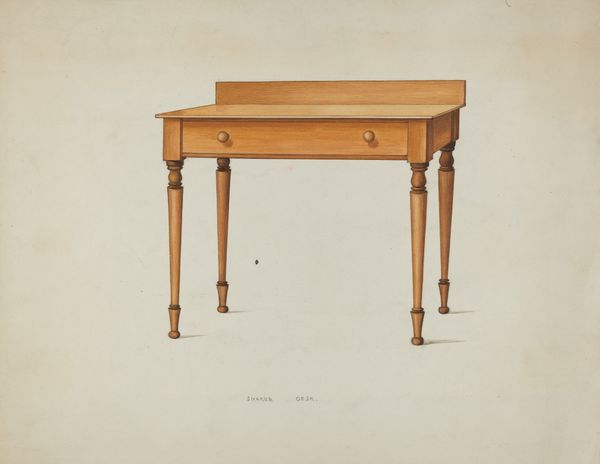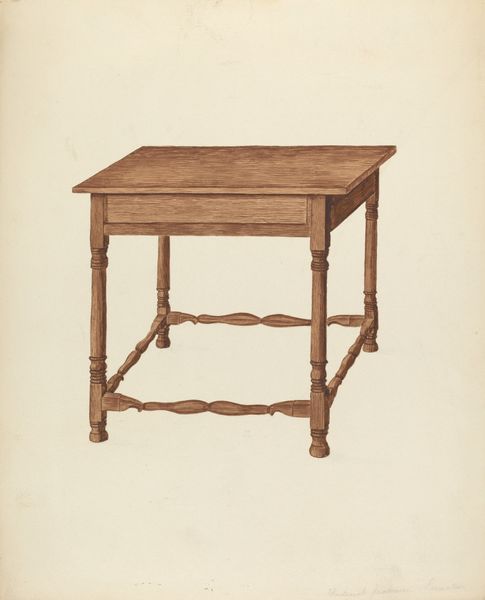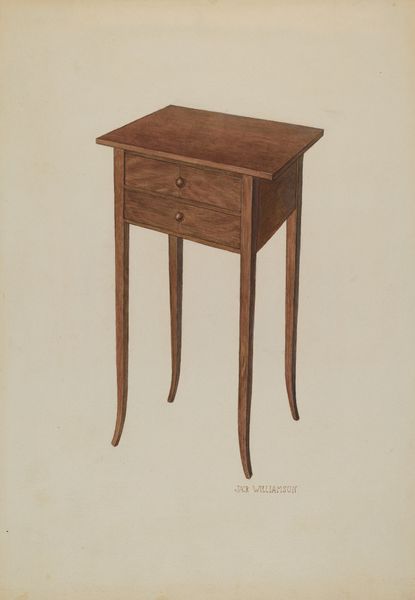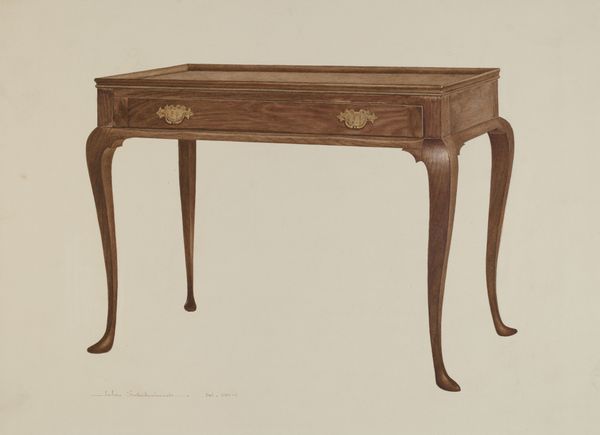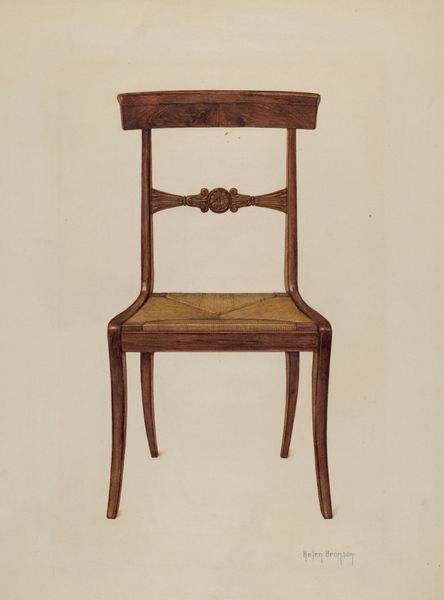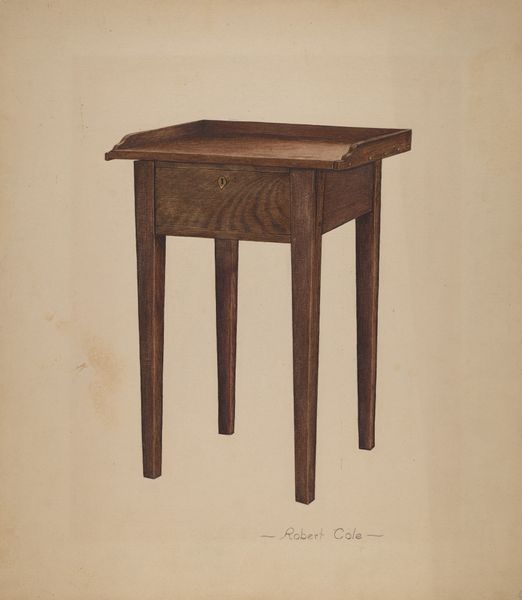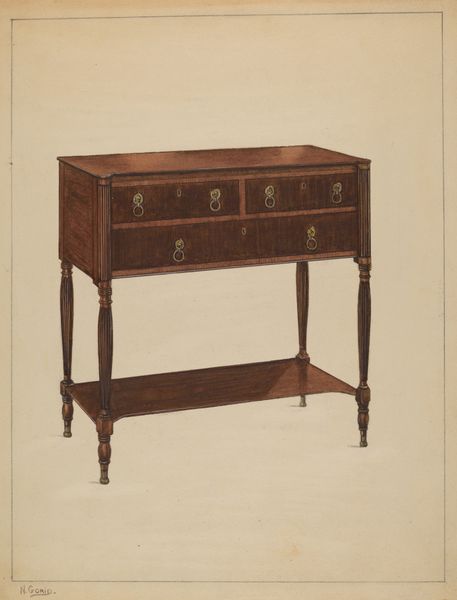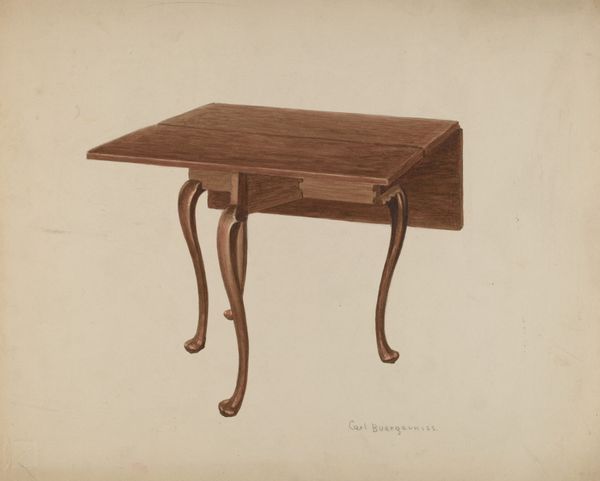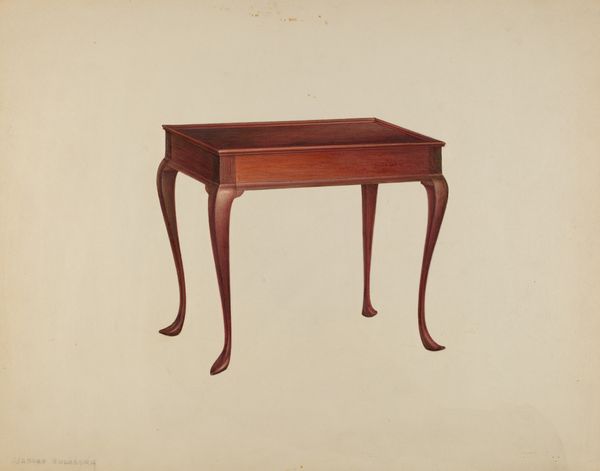
drawing, watercolor
#
drawing
#
watercolor
#
watercolour illustration
#
academic-art
#
watercolor
Dimensions: overall: 38.4 x 31.7 cm (15 1/8 x 12 1/2 in.) Original IAD Object: 21 1/4" wide; 28 3/4" high; 17 1/2" deep
Copyright: National Gallery of Art: CC0 1.0
Curator: Wellington Blewett's watercolor and ink drawing, "Bishop Hill: Table," circa 1936, is before us. Its precision and simplicity give it a uniquely dignified quality. Editor: My initial thought goes to the materials. It makes me wonder about the accessibility of specific woods at that time and the labour invested in its crafting. Did this artist work the material itself, I wonder? Curator: Precisely! The medium informs the work. Note how Blewett uses delicate washes of color to articulate the texture and grain of the wood. The repetitive rounded forms of the legs evoke a satisfying visual rhythm. It offers, perhaps, a representation of function. Editor: Rhythm, yes, but also consider how the single drawer implicates a potential function in the daily life. Think of the hands that used the table. The chosen watercolor medium emphasizes the intimacy and domesticity rather than the scale and grandeur we expect in "high art." Curator: True. Its success lies precisely in the rendering. Observe how Blewett models form through subtle gradations of tone. We move into a dialectic relationship that enhances form, in turn creating function and desire in the observer's mind. The shadows are not deep, allowing the object to be almost transcendental in its representation. Editor: The artist certainly foregrounds utility and honest construction through this representational image. This "academic art" depiction invites questions about labor, value, and our relationship with everyday objects that tend to go unregarded or even are considered obsolete. Curator: I am moved to contemplate function through design, and I will remember Blewett’s elegant, simple form through tonal washes. Editor: For me, this piece is a potent reminder to look deeper into mundane objects and contemplate their tangible connections to people, labor and materials.
Comments
No comments
Be the first to comment and join the conversation on the ultimate creative platform.
